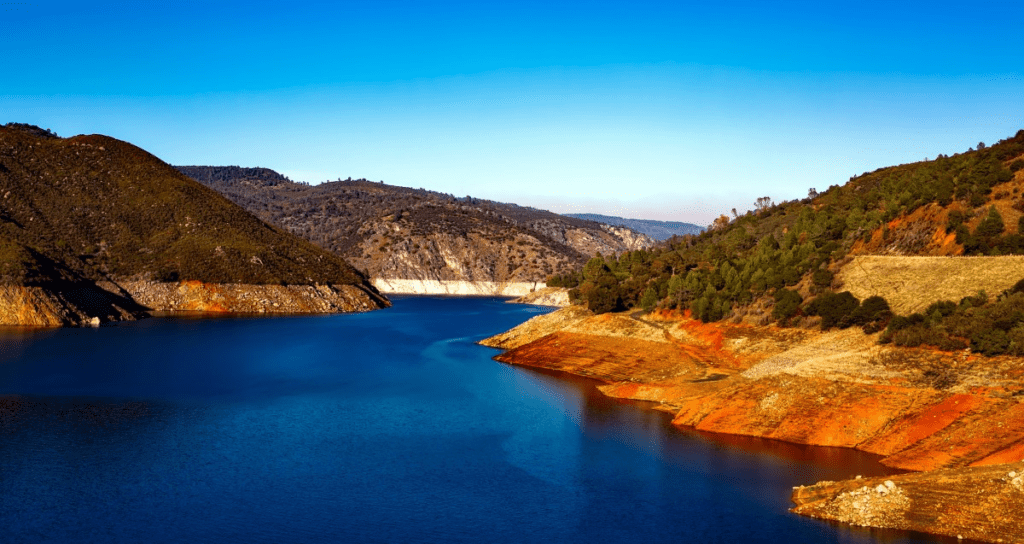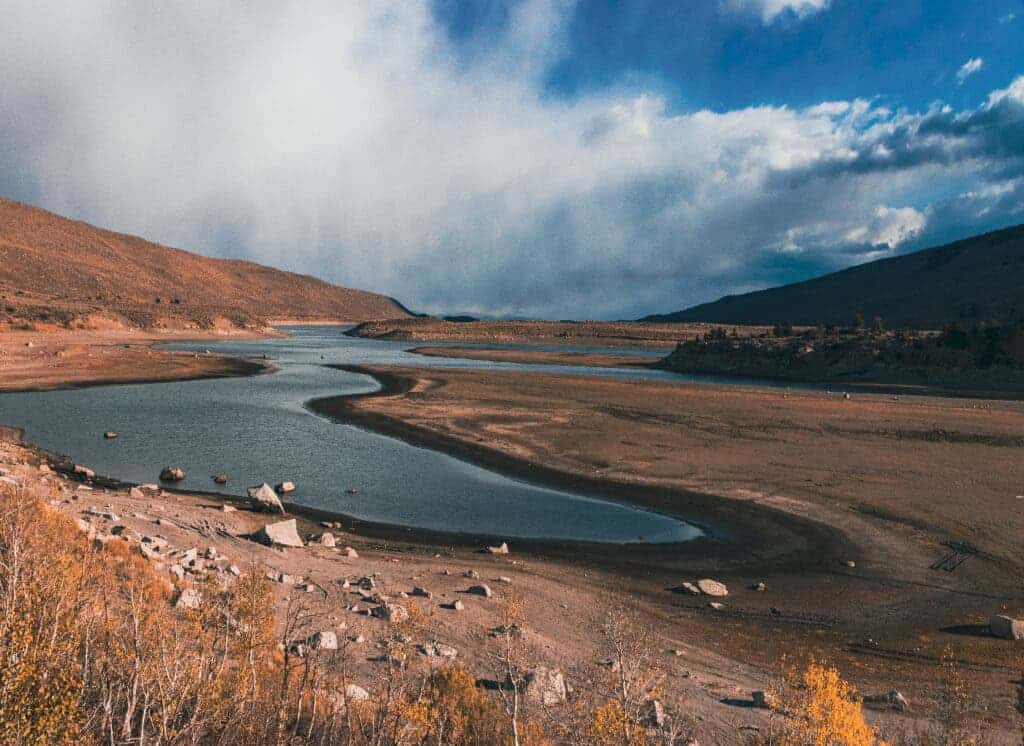California is in a megadrought. Like many other places across the world, climate heating and unsustainable water usage have brought California close to a potentially devastating water shortage. But some help may come from an unexpected place: economics.

Auctioning water
To economists, Paul Milgrom is a familiar name. The Stanford economist has been extremely influential with his work on game theory and market design. But one field, in particular, has brought him widespread recognition: auctions. Milgrom was even awarded a Nobel Prize for his work on auctions, alongside Robert Wilson. The two used innovative auction formats to make markets more effective.
For instance, Milgrom convinced the Federal Communications Commission to use an auction format that he and Wilson had designed to sell its spectrum broadcast frequency, raising over $60 billion for the U.S. Treasury in the process for something that was previously given away practically for free. Now, Milgrom wants to do the same thing to California’s water markets and make everything more efficient — through auctions.
But let’s take a step back and talk about what we mean by auctions.
“People get confused when they think about auctions, they think about bidding for a piece of art or something like that,” Milgrom told ZME Science in an interview. “What economists mean when we talk about auction is a process of decentralized resource allocation using prices. It means that we’ve got people who have knowledge about what they need and how valuable things are to them, and we take account of that information to allocate resources specifically, we make bids, and those things are converted to determine prices.”
“If you’re not using an auction you either mean you’re not using prices to guide the resource allocation or you’re not using individual bids. If you don’t use that information, you’re gonna have waste.”
Waste also means opportunity, and the opportunity Milgrom sees would be transferring water use from those who value it less to those who value it more (and are willing to pay more for it).

It wouldn’t be the first time Milgrom looked at using auctions for an environmental task. His work (alongside Wilson) helped the Environmental Protection Agency (EPA) reduce annual sulfur dioxide (SO2) emissions by over 93% through acid rain pollution allowance auctions. Their work on auctions was also instrumental in designing the European Union’s cap-and-trade greenhouse gas emission scheme, which currently covers around half of the CO2 emissions in the EU. So auctions can indeed be used successfully for environmental applications. But why California’s water markets?
Well, for starters, Milgrom lives in California, so the problem hits close to home. But more importantly, there’s a lot of waste in the market.
California’s drought is likely the worst in over 1,200 years, and that’s obviously having an effect on how the state uses water. Nearly half of California’s available water is used for environmental preservation — things like water required for maintaining habitat within streams, water that supports wetlands within wildlife preserves, and water needed to maintain water quality for agricultural and urban use. This is mandated by law.
The other half is basically what people can use. Out of this remaining half, 80% is used for agriculture, and only 20% goes into urban uses. Let’s put it this way: agriculture accounts for 80% of water consumption in California, but only 2% of the economic activity of the state. State law now also requires water users to make sure the groundwater basins they use are sustainable by the early 2040s.
So how do auctions play into all of this?
Well, water in California can be reallocated. To an extent, this is already happening, says Milgrom. When there’s a drought and there’s not enough water, water is reallocated to people who value it more — and are willing to pay more for it — at least that’s what you’d expect to see.
“You expect water to flow from less valuable uses to more valuable uses when not enough is around, but not much of that is happening. During a drought especially, you expect efficient reallocation,” the economist explains.
“In California, less than 5% of water is reallocated, even in the most severe drought,” Milgrom says
“The prices adjust [water gets more expensive], but the reallocation doesn’t adjust even when there is insufficient water. The prices are responsive, but the value of trade isn’t very responsive. So why doesn’t the market work, and what can we do to fix it?”
“It’s not what you expect in a market. What you would expect in a well-functioning market is that the water allocation would increase more to adapt to sending more water into higher value uses and less water into less-value uses. So we’d expect more trading to go on. The fact that it didn’t suggests there’s a problem with the market.”
Making things efficient — technology also helps
Designing a large-scale market for water isn’t without precedent. In Australia, a much larger proportion of water is being traded (about 50%); with a roughly similar standard of living, and similar environmental challenges, people in Sydney use about half that amount. But while Australia can serve as an inspiration for California, the same system can’t be replicated exactly.
“We can’t apply the Australian model to California because there are different property rights regimes, the rights are defined differently. They also don’t take into account return flows, which California water law does.”

The problem of return flows is a particularly thorny one. Whenever you use something, particularly for irrigation, some of it returns to the subsurface water. This means that when a farmer is using an amount of water, they aren’t using up all that water — some of it goes back into the system and can still be used by others downstream; the water that you take isn’t equal to the water that you use. So it doesn’t only matter how much water is used, but also where it is used on the stream: if all of it is used up upstream without any return flows, there’s nothing left for those downstream, but if it’s used upstream and there’s some return flow, the people downstream will have some water left.
Of course, monitoring this is not an easy task. Thankfully, new technologies are making it more feasible. Synthetic Aperture Radar satellites, for instance, can be used to monitor groundwater depletion, and various types of satellites also offer information as to how and where water is flowing.

The time for Milgrom’s approach could be ripe with new technologies, but developing the market itself is still a challenge.
In order for something to truly work, it can’t be a free for all — the water trading system would have to incorporate numerous constraints and externalities. This is where auctions become very useful.
“There’s all sorts of constraints that we can implement, one of the things we’re doing in modern auction design is the ability to implement all sorts of constraints. Traditional markets where people just exchange one to the other don’t take into account large-scale constraints, but water trading in California will take into account a great deal of constraints, the needs of the environment and the sustainability.”
“We’re also taking into account another thing: communities. If you take too much water out of agriculture in a community, there could be local towns where local unemployment goes up, there’s no jobs on the farms anymore and so we can constrain the flows that are allowed out of certain areas to protect them as well. All of that is possible to account for, you just have to decide what the constraints will be — and I expect a lot of fighting over that.”
Per California law, state communities already have water rights, and if they don’t sell the rights, they can simply use their water as they have until now. But if they find ways to economize and get by with less water, they could sell that water and maybe be even better off. This is an important distinction, Milgrom emphasizes.
“When we talk about moving water from low value uses to high value uses, I’m talking about marginal water, I’m not talking about starting from scratch and seizing the water that is used by communities. That is protected.”
Still, taking into account all of this and developing a system of auctions that can account for everything is an immensely complex task. You need to verify that the trades don’t affect other uses downstream or cause harm to a community, or cause any environmental problems like excess salinity in existing water, or overuse of resources. The measurement part is also extremely challenging.
“I’m cautiously optimistic,” Milgrom says, drawing from his experience with auctioning broadcast spectrum space. “Part of what’s making me optimistic that this is the right time is the progress in measurements and hydrological models.”

Tackling drought
Milgrom is mostly looking at water reallocation, trying to make water usage more efficient. But once people realize that they can get paid simply by economizing, that could reduce the overall water consumption.
“But once you put a price on something, you also lead people to economize. So we’re not gonna change the rainfall or the amount of water in the ground, but maybe some people will say that it’s costly to use this much water and there are other uses, maybe environmental uses, that are higher value. So we can increase the net water supply by reducing usage.”
For instance, farmers flood the land to grow rice, alfalfa, and other thirsty crops, but if water were priced properly, some farmers at least would use far less water and the effects of the drought would not be so severe.

Still, there’s a long way to go before this sort of system is implemented. Milgrom is working with a one-year deadline to present a project that will be hopefully, not only economically but also politically feasible.
But if the project is successful, this could be bigger than California, it could be a way to ensure more efficient water usage in other places. Systems like this could be implemented in other parts of the world suffering from drought– and with climate heating in full swing, we need all the help we can get.
“My hope is that there will be aspects of this that are generalizable. We’ll see, I think if we can make it work for California, it could be a model for other places as well.”






